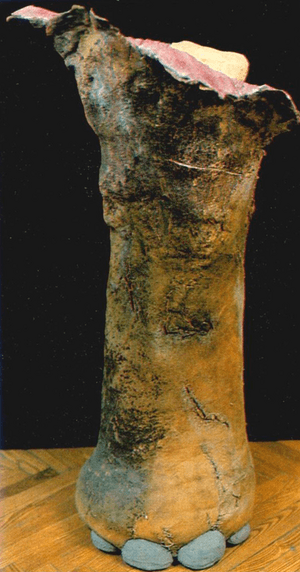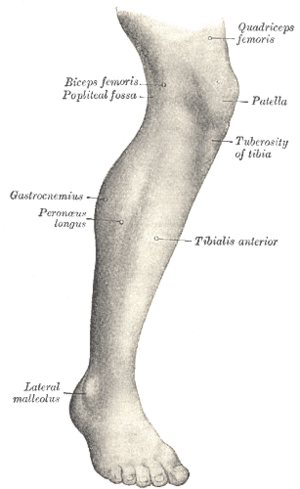Leg facts for kids
A leg is a body part that helps living things stand up and move around. It's like a support beam! Many animals, like birds and humans, have two legs. Other animals, like dogs or cats, have four legs. Even objects like tables and chairs have legs to hold them up.
Animals usually have 2 or 4 legs if they have a backbone (these are called vertebrates). Insects and spiders, which are arthropods, can have 6, 8, or even 12 legs. Some creatures like Centipedes and millipedes have many more legs, but not really a hundred or a thousand as their names might make you think! Humans walk on two legs, and each leg ends with a foot.
An animal with two legs is called a biped. An animal with four legs is called a quadruped.
People also use the word "leg" in fun phrases, called idioms:
- You don't have a leg to stand on: This means you have no good reasons or support for what you are saying.
- To leg it: This means to run very fast.
- To pull someone's leg: This means to play a small, harmless joke on someone by making them believe something that isn't true.
What Makes Up a Leg?
A leg is a structure you can easily see without special tools. What it's made of depends on the animal. In humans and other mammals, a leg includes many parts working together:
- Bones: These are the hard parts that give the leg its shape and strength.
- Muscles: These are tissues that help the leg move.
- Tendons: These are strong cords that connect muscles to bones.
- Ligaments: These are tough bands that connect bones to other bones, especially at joints.
- Blood vessels: These carry blood, which brings oxygen and nutrients to the leg.
- Nerves: These send signals between the leg and the brain, allowing you to feel and move.
- Skin: This covers and protects all the parts inside the leg.
For insects, their legs have most of these parts too. But instead of bones and skin, they have a hard outer shell called an exoskeleton.
Sometimes, the foot (the very end of the leg) is considered part of the leg. Other times, it's seen as a separate part. The same goes for the hip joint, which is where the leg connects to the main body.
Legs in Four-Legged Animals

In animals with four limbs, like many mammals, the word leg usually means the entire limb. For humans, the word "leg" can mean the whole lower limb, including the foot, thigh, and even the hip area.
However, in human anatomy, the word "leg" has a more specific meaning. It refers only to the part of the lower limb between the knee and the ankle. This lower part is also called the shank. The front part of the shank is known as the shin.
Humans use their legs for many activities, like standing, walking, running, jumping, and even dancing. Legs make up a big part of a person's body weight.
The lower leg is the part of your limb between your knee and your ankle. The thigh is the part between your hip and your knee. Together, the thigh and lower leg make up what is often called the "lower limb" or "lower extremity."
Robotic Legs
A robotic leg is an artificial leg that can move. It uses a special kind of motor called an actuator. This actuator takes energy, usually from electricity, and turns it into movement. Robotic legs can be used in robots to help them walk or perform tasks.
Prosthetic Legs
A prosthetic leg is an artificial leg designed to replace a leg that someone has lost. It helps people walk and do everyday activities.
See also
 In Spanish: Pata para niños
In Spanish: Pata para niños


